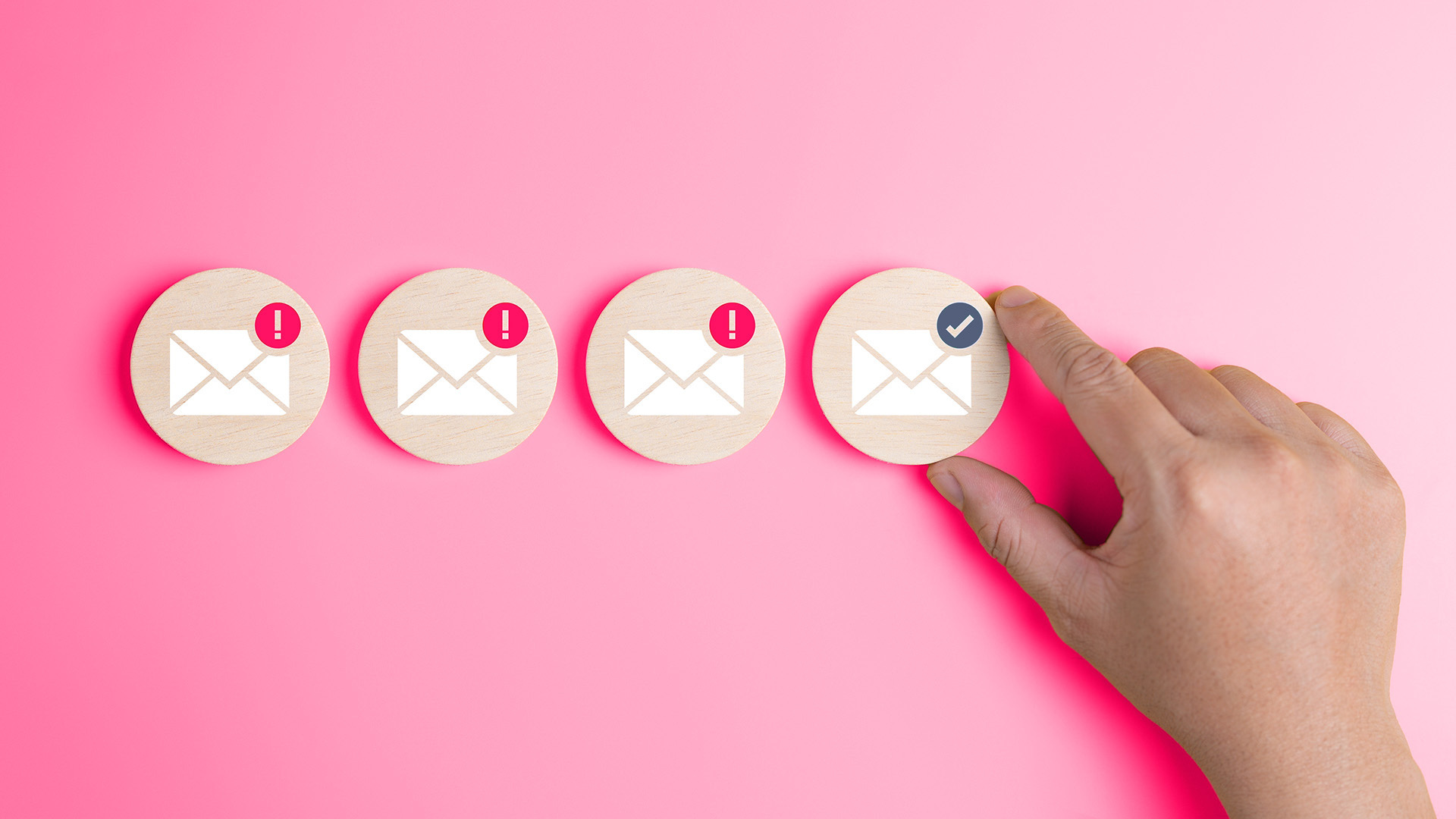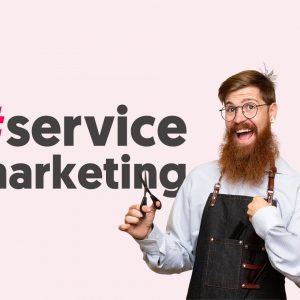

As you know, products are tangible whereas services are essentially intangible. Sometimes services can involve a physical aspect, however, a service never results in ownership.
Due to their difference in nature, marketing a service widely differs from marketing a product. Products often sell benefits, both functional and emotional. On the other hand, services rather sell an ‘experience’.
In this article we are going to explore the differences between product and service marketing, why it is important to your business and how you can successfully implement service marketing.
Product marketing involves the common 4 P’s of marketing: Price, place, product, promotion. These four key elements of marketing, often called the marketing mix, allow businesses to identify driving factors for their business.
The analysis of the 4 P’s includes things like consumers’ needs, how the business can satisfy these needs, how the product is going to be promoted, why it stands out from the competition, or what pricing strategy fits best.
As we mentioned before, products are tangible. They are physical objects that can be touched, such as a book, skin oil, a couch, or a table. Because products can be physically perceived, products are easier to understand from a customer’s perspective. Hence businesses will find it easier to bring across values and benefits that a product can offer.
Services on the other hand are intangible that customers cannot physically touch. Often they deliver an ‘experience’. Commonly, this makes it much harder for customers to understand its value, because they simply cannot evaluate the service prior to experiencing it.
With that comes higher perceived risk. Customers often wonder: Will I receive the desired outcome? How do I know it delivers what is being promised? Will I get my money’s worth?
While customer perceived risk increases, the chance of successfully selling your service to them decreases. That’s why service marketing is all about minimising customer perceived risk and increasing customer perceived value.
We will get into more detail with this later on. But as you can see, there is a real difference between marketing a product opposed to a service.
The additional three P’s to the usual marketing mix are essential in service marketing. If you want to successfully sell a service, you need to consider all of the 7 P’s:

Let’s define the three additional Ps essential for service-based businesses.
The power of the people – this couldn’t be any more fitting for the service industry. Your employees, managers, and culture are crucial in any service delivery.
When was the last time you only half-way enjoyed your favourite meal, because your waiter was in a sour mood? Have you ever felt frustrated with the outcome of a haircut? Was your parcel ever delivered two weeks later than promised?
“The power in people is stronger than people in power.”
Saji Ijiyemi
Your human resources are most important to meet and exceed a customer’s service expectations. Teaching your employees how to deal with customers in specific situations and how to handle contingencies is crucial for your business’ success.
As services are intangible, the way you deliver your service becomes critical.
For example, customers expect to receive the same kind of service they did last time. They also want to receive the service that you promised them on your website.
Delivering a quality service requires you to have a well-designed delivery process in place. This ensures that customers get the same standard of service every single time.
Ever heard of the service blueprint? It’s a method of breaking down a company’s service delivery process step by step. Giving you a detailed insight into each step of the process, it helps you to identify pain points that customers or your employees may encounter throughout.
It also allows you to set standards such as opening phrases that your employees should follow when a customer enters the service facility.
Here’s a free service blueprint template to use!
Because services are intangible in nature, service providers like to add some physical aspect to their offering as it helps mitigate customer perceived risk.
And when a customer’s perceived risk decreases, understanding the values and benefits of the service becomes much easier.
Adding physical elements lets you improve customer experience, which in return drives profitability. Physical elements include your store, website, and social media platforms. Making these elements as pleasant and engaging as possible will help you further enhance customer experience. For example, a couple of plants or magazines make a waiting area much more inviting.

For example, a hairdresser will often have a well designed waiting area where customers can enjoy reading a magazine or checking their socials while waiting for their service. They would also have an easy to navigate website with all the information of the salon as well as curated and engaging social media channels.
While all services are intangible, there are some that do incorporate physical aspects into the service delivery. Let’s have a look at the four service categories:

This service category involves tangible actions to a person. It usually requires customers to be physically present at the service facility to receive the benefits of the service. For example, a customer needs to travel to a hair salon to get a haircut. Since customers are highly involved in the service process with this service category, the three additional P’s become even more important.
These services don’t involve customers directly, but include tangible actions to their products or possessions. For example, mover or delivery services go under this service category as they move products and possessions that belong to customers from one place to another. Customers are only slightly or not at all involved in the process.
Entertainment, sports, and education fall under this service category. These services involve intangible actions aimed at people’s minds. Customers must be mentally present, but don’t have to be at a specific location or service facility. Mental stimulus services aim to influence customers’ mental state. For example, at a concert you might feel mentally stimulated with excitement and joy. Watching an online lecture from your educational institution provides you with knowledge that helps you develop your mental ability.
These cover intangible actions targeted at customer’s intangible assets such as information. Examples include banking, insurance, legal services, and research. Customer involvement in the service process is very low or zero. Besides information processing there are no other processes involved.
Now, let’s investigate how these different types of processes have an influence on marketing strategies.

By now you would have a profound understanding of the major differences between a product and a service. Remember, services deliver an ‘experience’ rather than physical benefits. They also come with higher customer perceived risk, because customers cannot evaluate its benefits prior to buying it. Hence the main thing you want to do is think about how you can mitigate that risk.
The next step is to analyse the 7 P’s. Analysing the key factors of service marketing will help you identify how your service can fulfil customer’s needs and wants.
Once you know how your service will meet your customer’s desires, effective marketing strategies can be developed to best attract and engage customers.
Drawing a service blueprint will further help you understand your service delivery process in more detail and identify potential pain points. Addressing these will assist in improving your service quality, increasing customer satisfaction.
And what do happier customers do? Buy more!
[/et_pb_text][/et_pb_column][/et_pb_row][et_pb_row admin_label=”Blog – Digital Marketing Opt In Form” _builder_version=”4.18.0″ _module_preset=”default” custom_margin=”||||false|false” custom_margin_tablet=”||-150px||false|false” custom_margin_phone=”||-150px||false|false” custom_margin_last_edited=”on|tablet” custom_padding=”||||false|false” global_colors_info=”{}”][et_pb_column type=”4_4″ _builder_version=”4.16″ _module_preset=”default” global_colors_info=”{}”][et_pb_text _builder_version=”4.18.0″ _module_preset=”default” text_font=”||||||||” text_font_size=”1rem” text_line_height=”2.5em” header_2_font_size=”4rem” header_3_font=”|700|||||||” header_3_text_color=”#1F2A44″ header_3_font_size=”1.7rem” header_3_line_height=”1.3em” custom_margin=”25px||25px||false|false” global_colors_info=”{}”]
See how to best market your services.
[/et_pb_text][et_pb_wpt_gravityform gravityform_id=”gf-27″ title=”off” description=”off” ajax=”on” field_values=”pagesource=Branding” module_class=”rhs-form” _builder_version=”4.18.0″ _module_preset=”default” global_colors_info=”{}”][/et_pb_wpt_gravityform][/et_pb_column][/et_pb_row][/et_pb_section]